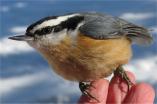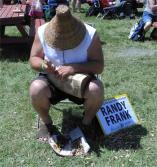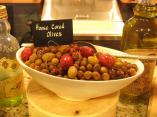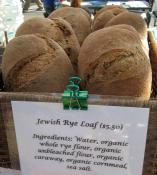 Tuesday after Tuesday has slipped by in another busy month. A couple of Tuesdays ago, American ethno-botanist Gary Nabhan visited the University of Victoria to give one of the Landsdowne Lectures. A distinguished writer, teacher and conservation biologist from Arizona, Nabhan has published work whose subject matter ranges from tequila, to place-based foods, to diabetes in desert-dwellers, to the marriage of science and poetry, to his special passion for chile peppers. He delivered a fascinating and fast-moving talk to a crowded lecture theatre, covering climate change, indigenous diets and the need for adaptation and knowledge-sharing among First Nations communities struggling to protect sources of their native plants and other food sources.
Tuesday after Tuesday has slipped by in another busy month. A couple of Tuesdays ago, American ethno-botanist Gary Nabhan visited the University of Victoria to give one of the Landsdowne Lectures. A distinguished writer, teacher and conservation biologist from Arizona, Nabhan has published work whose subject matter ranges from tequila, to place-based foods, to diabetes in desert-dwellers, to the marriage of science and poetry, to his special passion for chile peppers. He delivered a fascinating and fast-moving talk to a crowded lecture theatre, covering climate change, indigenous diets and the need for adaptation and knowledge-sharing among First Nations communities struggling to protect sources of their native plants and other food sources.
He began with an expression of concern about the rapidity of climate change inserting itself into food security: the ravages of drought, he said, are changing what’s going to be on our plate in the near and long term. If you don’t think that climate change alters access to food, wait and see what happens to food selection and price in both developing and developed world this year. Five Canadian provinces, 1,800 rural counties in US and 7 Mexican states have experiences droughts and climactic disasters this year that count as the worst in recorded history. Newly introduced plants, weeds and insects are causing problems for traditional plants even as climate works its changes.
He spent quite a bit of time on the notion of terroir, and its “relationship to place” that draws lines between flavour and culture. Both physical environment and cultural perceptions contribute to the particular flavour profile in indigenous foods. It doesn’t really make much difference whether landscape, soil or culture is the most important to these flavours, since all these things are now being affected by climate change. It is affecting both wild and managed place-based foods, like heirloom vegetables and fruits, heritage livestock and poultry, and “Salmon nation” foods, some of which were introduced, while others went feral: giant camas, Olympia oysters, Pacific littleneck (butter) clams, wapato, Hooker’s onion, moss cranberry all of which had stewardship traditions.
Traditional foods in all cultures are undergoing both availability and flavour shifts due to climate change. Where once terroir was perceived as a stable quality, now its definition is being scrambled by the “new normal” of climate change: both flavours and price will change as a result. “Many grape varieties may now be at their ripening limits,” he observed: they won’t taste the same unless we grow them at different latitudes which can offer them the growing season and temperatures they’re accustomed to.
Other foods just simply won’t be able to be grown where they used to be: for example many wild and cultivated fruits and nuts require adequate winter chill hours and optimum mean temperatures that are no longer available. The wild relatives of cultivated crops have not been well studied, but will also be subject to these changes: lacking the winter chill hours for budding, fruiting and optimum yield. The bog cranberry, cloudberry, trailing blackberry, Pacific crabapple and beaked hazelnut are a few examples.
This whole situation puts any traditional food products – such as those protected by geographical indications – at particular risk, worldwide, as climate change begins to bite. Seed banks are not the answer, since they lock seeds into climactic conditions that will no longer exist by the time the seeds are needed.
He turned to his own beloved chile peppers as an example of what’s happening to traditional crops. They are particularly vulnerable to changes in climate, as they flower and set fruit in hurricane season. Drought has brought disruption: low yields, insect predation (the nitrate counts increase due to drought stress, which attracts insects); freak freezing weather in 2011 killed 60-80% of the American chile crop that year.
Ironically, we have, through urbanization, inadvertently created laboratories to study climate change: urban heat islands can forecast what will happen in adjoining rural areas within a few decades. Now is the time to be observing those changes and learning from them.
The action required? Assisted migration of heat-stressed plants or food animals is one option, though this won’t help wild foods. Knowledge will have to be shared by southerly neighbours as the growing conditions move northwards. Traditional agro-ecological practices will be needed in order to create climatically buffered micro-habitats for vulnerable foods, in a system he called “ethno-mimicry” – preserving foods that are ceremonially, medicinally or nutritionally necessary in indigenous food systems.
Traditional food managers are not passively victims of climate change, but are already adapting, through such methods as water harvesting and conservation, or using “nurse plants” to shelter temperature-sensitive edibles and medicinals. We’ll need new alliances of producers and consumers to redesign food systems for resilience, changing our “food prints”.
Knowing where our food comes from, he concluded, is “the surest way we have to lodge ourselves within this blessed earth.”









